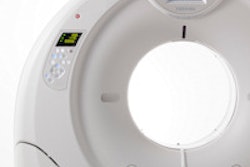CT is great at staging breast cancer, but due to cost and radiation, ideally it should be restricted to patients most at risk from metastases. Also, a prompt review of current breast cancer staging guidelines is required to ensure consistency in patient selection for CT staging, researchers have noted in an article in press in the European Journal of Radiology (EJR, 11 July 2013).
"Staging of breast cancer to look for occult metastases is an important part of the diagnostic workup of the patient as stage directly influences not only prognosis but also whether locoregional or systemic treatment is used," wrote Dr. Peter Moule from Middle Hill in Englefield Green, U.K., and co-author Dr. Rachel Oeppen from the department of radiology at Southampton General Hospital in the U.K. "The rationale for determining metastatic spread is that it not only alters treatment strategies but is also an important prognostic factor for patients with breast cancer, with higher stage cancer having a reduced 10-year survival rate, falling from 90% in stage 1 disease to just 10% in stage 4 disease."
A number of imaging modalities have been used in the preoperative staging of breast cancer: liver ultrasound, chest x-ray, bone scintigraphy, CT, FDG-PET, and MRI. There is extensive data on the use of conventional imaging modalities (chest x-ray, liver ultrasound, bone scintigraphy) in screening breast cancer patients for metastatic disease, but, in general, these have shown that staging is unnecessary for the majority of patients (particularly those with small tumors or minimally involved axillary nodes), and these modalities are ineffective in this patient group, having a very low sensitivity for metastatic deposits, they wrote.
In contrast, there are little existing data evaluating the role of CT in staging, but the available data show statistically significant results (p < 0.05) for the detection of metastatic disease and conclude CT is an accurate method for staging invasive breast cancer. No firm guidelines indicate which patients should undergo staging CT: Cancer units use local criteria to select patients for CT, meaning some patients undergo unnecessary investigations and exposure to ionizing radiation. Moule and Oeppen sought to determine which patients are most likely to have metastases and what characteristics determine whether to CT stage.
The retrospective study of female primary breast cancer patients who presented to the Southampton University Hospital Trust breast unit was conducted between May 2006 and July 2010. All the patients had preoperative CT staging. Information was obtained from the radiology information system (CRIS), pathology data system (Equest), and breast screening program records (NBSS). Demographic, radiological, and pathological data were entered into an Excel spreadsheet that was designed to record the pertinent data.
Of the 114 patients eligible for analysis, 21 had distant visceral metastases confirmed by CT. Statistically significant (p ≤ 0.05) relationships were found with axillary lymph node involvement on ultrasound and biopsy results of tumor size, mammographic size, and pre-CT stage with the existence of metastases on staging CT. The most common reason for CT staging was axillary lymph node involvement on ultrasound with 56.5% of metastases being staged for this reason.
Incidence of metastases increased from 3.64% in early stage disease to 13.33% in late-stage disease.
Who to stage, who not to stage?
"Currently, there are a number of different guidelines on the use of CT imaging in staging primary breast cancer but with little consistency in their approach and open to much interpretation," the researchers wrote. "NICE [National Institute for Health and Care Excellence] guidelines currently suggest using a combination of chest x-ray, ultrasound, CT, and MRI to assess metastases; using CT, MRI, or bone scintigraphy for bone metastases; and to use PET/CT if metastases are suspicious but not confirmed by other imaging modalities."
NICE recommends stage 3+ or T4 tumors should be staged, but that there is insufficient evidence to recommend one modality over another, Moule and Oeppen wrote. The National Comprehensive Cancer Network suggests staging is not required in early-stage breast cancer and should only be recommended in symptomatic or late-stage disease (T3, N2, stage 3+), and that asymptomatic stage 1 should not be staged.
In contrast, the British Association of Surgical Oncology recommends no asymptomatic patients should be staged. In this study, 71.4% of the patients with metastases presented with symptomatic primary breast cancer.
"Predictors of high-risk metastatic spread in primary breast cancer would be very useful to ensure that CT staging is targeted at higher-risk cases, to avoid unnecessary surgery in patients with metastases and to prevent unnecessary radiation and anxiety in those at low risk," the researchers added. "One study found a strong correlation between tumor size and metastases. In this study, median tumor sizes were 20 mm and 6 mm larger on mammography and ultrasound, respectively, in patients with metastases than in patients without metastases."
Overall, the authors found metastases are more common in those with locally advanced disease (27.3%) compared with those with early-stage disease (10.1%), in line with other studies in which 3.0% of patients with metastases had early-stage disease and 30% had advanced-stage disease. Patients with advanced-stage breast cancer are an important subgroup to undergo staging as incidence of metastases is greater.
A statistically significant relationship (p = 0.014) also was found in those presenting with inflammatory breast cancer and having metastases, indicating those presenting with inflammatory breast cancer should have CT staging as well, the researchers found.
In addition, a statistically significant relationship (p = 0.027) was found between axillary nodal involvement on ultrasound and the presence of metastases; however, three of 21 (14.3%) of patients with metastases had no axillary nodal involvement on ultrasound.
"A normal axillary ultrasound does not, therefore, exclude the presence of nodal involvement," they wrote. "As many as 17/90 (18.9%) patients without metastases had suspicious axillary nodes on ultrasound, and none of the metastatic group had axillary nodes classified as suspicious. Therefore, more rigorous classification of axillary nodes between involved and not involved would improve patient selection for CT staging, either through advanced imaging techniques such as ultrasound elastography or percutaneous node sampling."
They also estimated 25% of patients with late-stage disease will have bone metastases at initial diagnosis, dictating this subgroup should undergo further staging investigations.
Advantages and disadvantages of CT
Besides being logistically easier for patients as only one visit is required, CT takes less time compared with a bone scan. However, in this study CT did not pick up skull metastases that a bone scan revealed because CT does not cover the head and neck, whereas a bone scan covers the whole skeleton. And of course, CT involves greater radiation exposure (9.9 mSv) compared with bone scan (4.2 mSV).
"It has however been considered that in patients with later-stage disease and higher risk of metastases, this radiation exposure is a justifiable risk," they wrote. "This study has shown significant relationships between the independent variables mammogram size, pT [tumor size], and pre-CT stage to metastases. The advantages of this analysis is that these variables can be reliably used to help predict the odds of metastases in a patient and guide decision- making of whether to CT stage or not."
The results from this study indicate CT staging may not be required in all cases and could be restricted to those patients most at risk from metastases, including patients with late-stage disease, axillary lymph node involvement on ultrasound, and those with large tumors, the researchers concluded.
"To avoid patient anxiety and treatment delays, and because of the costs and limited availability of newer imaging techniques and radiation legislation stating that unnecessary radiation exposure is unacceptable, it is important that clinicians select only those cases where metastases are most likely for staging," they added. "A review of national breast cancer staging guidelines will be required to ensure regional consistency in patient selection for CT staging of primary breast cancer."
Breast cancer accounts for 16% of all cancers in the U.K. and is the most common cancer in women in the U.K. and Western Europe with an incidence of 39,681 in the U.K. in 2008, they explained.



















